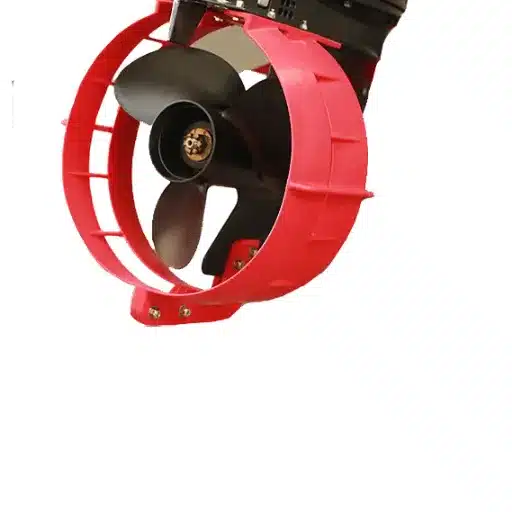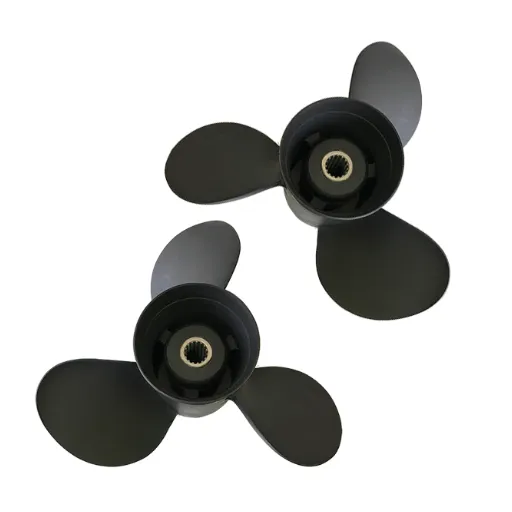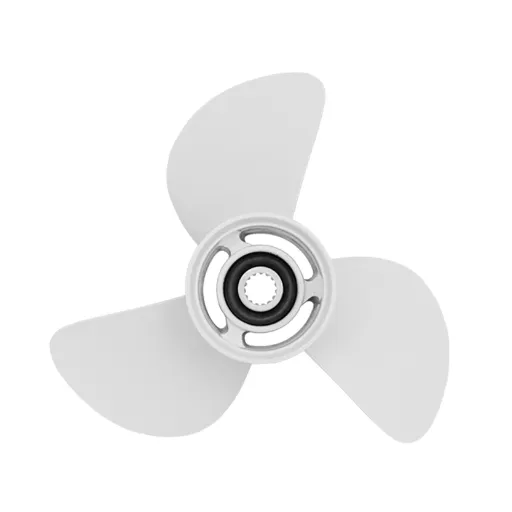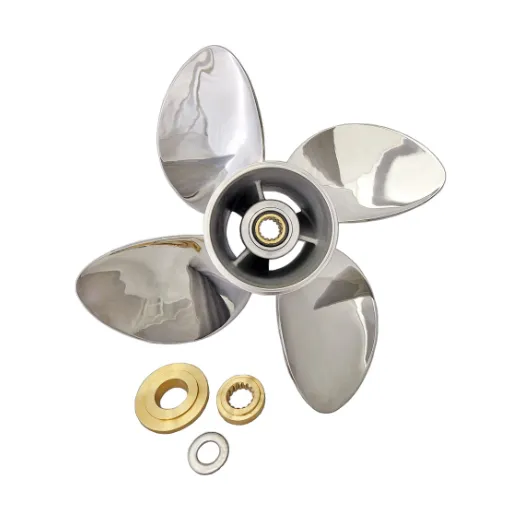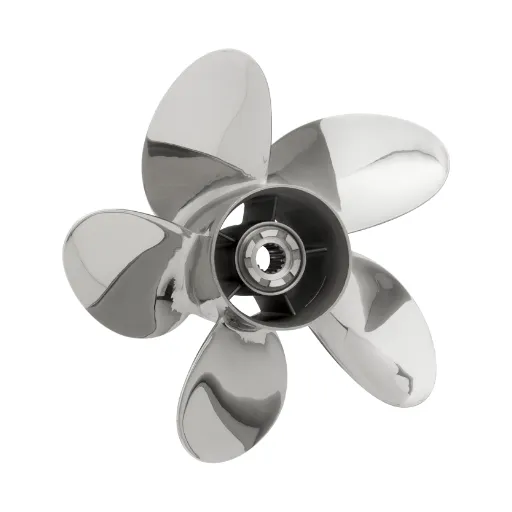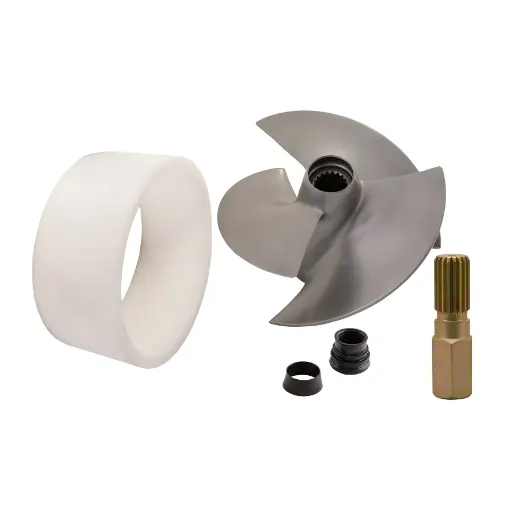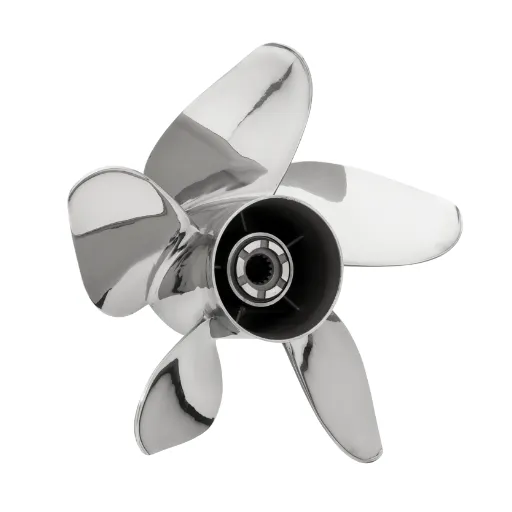Boating has always been associated with freedom and adventure, but safety precautions on the water must always be in place. The invention and improvement of propeller ring guards and baskets are among the most important marine technology breakthroughs for 2025. The main aim of these new devices is to greatly limit the dangers caused by open propellers thus providing safety for not only the boaters and swimmers but also the surrounding marine life. In the following paragraphs, we will discuss how these safety measures are changing the whole mindset of boating safety as a critical issue and what they imply for the future of responsible marine recreation. The new devices are a must-know for everyone who wants to experience boating; hence, whether you are a pro or a novice, understanding the technology is the way to enjoy a safe and eco-friendly water experience.
Understanding Propeller Safety
What are Propeller Ring Guards and Baskets?
Safety devices known as propeller ring guards and baskets have been conceived to cover or protect boat propellers, thus lessening the chances of accidents and injuries caused by the latter. Generally, these apparatuses are produced using very strong materials such as stainless steel or heavy-duty plastic, which makes them capable of surviving the tough conditions of the sea and still offering dependable protection.
The propeller is encircled by the ring guard creating a protective zone where no contact with anything, including people or marine life, in the water is allowed. They have found extensive application in the medical field where the negative impact of injuries is reduced and safety of the community is improved, particularly in places where swimmers and divers or wildlife are around. This type of construction not only improves safety but also prevents the propeller from being damaged by debris.
Baskets, however, are usually more solid now and can help in giving even more safety in certain situations like rescue, shallow water work, or places with thick underwater plants. They are built to ensure the utmost safety while at the same time allowing the boat to performance as much as possible. Both propeller ring guards and baskets contribute significantly to the establishment of responsible fishing practices and protection of lives in areas dedicated to marine recreation.
How Do Propeller Guards Prevent Strikes?
Propeller guards act as a physical barrier around the propeller, and thus prevent strikes, the chances of direct contact with objects, marine life, or people in the water are considerably lowered. These guards are meant to surround the moving parts and hence the keeping them barriers from unintentional impacts. This aspect is especially important in case of a higher human activity area such as swimming zones or marinas.
A propeller guard forms an outer barrier that not only protects people but also helps to bounce off debris and other water obstacles thereby lessening the impact on the boat’s propulsion system. Besides, these guards are designed to ensure the boat’s operation with water consistently flowing through and not obstructing propulsion while still providing a big safety upgrade.
Propeller guards use strong and well thought out designs to not only passively but actively promote safer boating environments. They are the vital parts of the system that protects both marine habitats and the lives of humans from unlikely but dangerous propeller strikes. Using them shows that one is following the path of responsible and considerate boating practices.
Importance of Boating Safety in 2025
Safety on the water in 2025 is a must since it is already very critical owing to the large number of people who are recreating on boats, the technological advancements in watercrafts and the environment that needs to be preserved. Safety measures become a main concern for the whole boating community comprising owners, passengers and regulators since the risk of accidents increases with the number of people using the waterways. Education, maintenance, and safety rules observance are the three pillars that support the minimization of hazards as well as the promotion of good boating experiences.
The right use of safety equipment is one of the crucial factors in boating safety. Life jackets, fire extinguishers, and first aid kits are the main items on board that are very important in preventing deaths and managing emergencies. Moreover, technological aids like GPS, weather updates, and automated alerts are very effective in areas of navigation and also in improving the time taken to reach the site of an accident. It is the responsibility of the boat operator to keep a watch and confirm that all the equipment is functioning well before taking off.
On top of that, environmental safety should always be in the limelight at the present time. Knowing the laws about wildlife protection, dumping garbage in the right place, and not using delicate waters too much are some of the ways that the boating community can help the environment. By providing personal safety measures together with environmentally friends practices, the water sports community of 2025 can be a good example for the planet as they while at the same time offering a reduced risk for themselves and allowing the natural habitat to be preserved for the coming generations.
Types of Propeller Guards and Their Designs

Different Types of Propeller Guards
Guarding the propellers of watercraft is an important and delicate task, and there are different designs of propeller guards that serve different purposes. They can be designed to protect the water surface, people, or both and at the same time allow the watercraft to work at its best. Below is a list of the types of propeller guards that are commonly used:
1. Cage-Style Guards
Cage-style guards are built around the propeller using metal or plastic cages to keep the propeller completely enclosed. This barrier prevents the people or objects from coming into contact with the propeller directly. These guards protect not only the swimmers and marine life but are also among the most common guard style used in recreational and rescue boats. However, due to the hindrance caused to the water flow, the boat performance may go down slightly.
2. Ring Guards
This type of guard, also referred to as shroud guards, features a sturdy circular structure encircling the propeller. The purpose of this device is to guard the blades while simultaneously reducing drag and enabling effective thrust. Such guards are predominantly found on commercial and industrial boats.
3. Screen Guards
Screen guards come in the form of mesh screen or grid and add another layer of protection by filtering out great debris and other objects but at the same time do not much obstruct the water movement. They can be especially suitable for working in shallow waters where the chances of debris are higher.
4. Hydrodynamic Guards
Hydrodynamic propeller guards have the advantage of safety without performance loss thanks to the design of the guards. These guards get their popularity by working on fast-moving vessels since high efficiency is a critical factor for them.
5. Nozzle Guards
Nozzle guards stand out by performing the role of both propeller protector and thrust enhancer through the directing of water flow towards the boat. They are the most common choice in towing and heavy-duty applications where power, safety, and comfort are sought after.
Different types of propeller guards are meant for different watercraft scenarios, and a suitable design is determined by such factors as vessel type, environment of operation, and purpose of use. The constant improvement in the technology associated with these guards continues to bring about safer and more efficient operations on the water, thus making the waterways safer for all.
Innovative Propeller Ring Guard Designs
Safety, effectiveness, and longevity are the main advantages of modern propeller ring guard innovations using the latest materials and engineering techniques. Most of these innovations include strong composite materials that do not corrode and are still light enough to minimize the effect on the ship’s performance. Also, advanced hydrodynamic shaping is becoming standard in ring guard designs since it reduces drag and optimizes water flow around the propeller.
One of the recent developments is the ring guards that come with the capacity to absorb shocks built-in, which allows them to withstand even better the impact of debris or underwater obstacles. At the same time, manufacturers are looking into the use of biodegradable materials for the production that would not only cause lesser environmental impact during the life cycle of the product but also be easier to dispose of. Smart technologies, like the embedding of vibration sensors in the guard, are currently being introduced to passively monitor propeller operation and identify possible problems in real-time. This is a list of some of the technology advancements, which not only put the guard’s functionality on the higher level but also assist the boating community in practicing safe and sustainable habits worldwide.
These designs are further supported by extensive testing and research to ensure that they meet the stringent safety standards, thus making them essential for both leisure and commercial ships. With constant innovation in the field, propeller ring guards continue to evolve as indispensable tools for safe and efficient marine operations.
Comparing Propeller Guards and Baskets
| Key Point | Propeller Guards | Propeller Baskets |
|---|---|---|
| Purpose | Protect blades, reduce injuries | Prevent debris entanglement |
| Design | Surrounds blade tips | Positioned near propeller |
| Material | Metal or durable plastic | Metal mesh or similar |
| Performance | May reduce speed slightly | Minimal performance impact |
| Best Use | Safety, shallow waters | Debris-heavy environments |
| Maintenance | Inspect for cracks, loose parts | Remove trapped debris regularly |
| Compatibility | Fits specific propeller sizes | Universal or custom fit |
| Cost | Moderate to high | Low to moderate |
Impact on Boat Performance

How Propeller Guards Affect Boat Performance
Although propeller guards are a necessity for safety and minimum environmental impact, they also have a number of effects on the performance of the boat. One of them is the change in hydrodynamics, which is one of the main factors. It is the principle of design that propeller guards encase or surround the propeller and then that leads to the increased drag. The rise in resistance in the water usually causes a decrease in overall speed and sometimes even efficiency, because the engine has to work more in order to get to the same performance level as an unguarded propeller. However, the designs of guards have to be less affective, while utilizing streamline shapes and lightweight materials to not create drag.
Maneuverability is another factor that significantly impacted. Sometimes the addition of a propeller guard will limit the precision of tight turns or responsiveness, especially at higher speeds. This is due to the changes in water circulation caused by the guard, which can slightly change the thrust and handling traits of the boat. Still, for ships operating in areas where security is important, like near swimmers, wildlife, or in congested waterways, the sacrifice is often seen as worthwhile. The latest designs are always being improved to make handling easier while still giving strong protection, making sure that safety and performance are not at odds with each other.
On the brighter side, propeller guards can very much prolong the life of the propeller, as they will protect its from being damaged by debris, rocks, or other hidden obstructions. This leads to long-term maintenance costs and repair downtime being decreased, which can result in higher operational efficiency, particularly for commercial vessels. Also, by preventing accidents or hurting the marine life, propeller guards allow the boat operators to meet the requirements of the conservation laws and safety regulations. The small performance trade-offs are still there but the overall advantages, like the lower risk and no or less maintenance, are often more than the disadvantages in the light of the design optimization in the ongoing innovations.
Compatibility with Various Boat Types
Propeller guards are designed to be versatile, meaning that they can fit a lot of different kinds of boats without losing their performance. A light and compact propeller guard has been made available for smaller recreational boats, such as pontoons or fishing boats. It will not give you much weight or drag but will give you the necessary protection. Usually, these guards are made from tough materials, like stainless steel or polycarbonate, to last long and be easy for hobbyists and casual boaters to use.
Heavy-duty marine propeller guards are required for the large commercial and industrial vessels as they are designed for such operations with a reinforced structure. Tugboats, ferries, and transport ships, for instance, often come to the lengths of having guards that are precisely made for their propeller dimensions and power output. They are provided with the tough and durable solutions which are resistant to extreme conditions, continuous exposure to saltwater, and high-impact debris. Manufacturers are frequently working together with operators of commercial fleets to obtain perfect fittings and compatibility for the best operation.
The updates in the propeller guard design have taken away the limitations and made rescue crafts, patrol boats, and eco-tourism vessels among the specialty boats along with the availability of propeller guard. For these types, where operational precision and safety are paramount, modern propeller guards often incorporate hydrodynamic features to maintain optimal speed and maneuverability. Technology keeps getting better and manufacturers are coming up with models that are not only practical but also stylish, which means that no matter what type of boat you have, propeller guards can be a great asset for safety and performance while still being a trend.
Evaluating Effectiveness in Preventing Accidents
The impact of propeller guards on accident prevention has a lot to do with their types, places of application, and the characteristics of the places they are put to use. A guard designed perfectly can cut down the risk of human injuries and the killing of wild animals due to their contact with the rotating propeller to a large extent. The guards are there as a barrier or obstacle and do not allow the contact of blades with any object. In places that have a lot of people doing recreational activities or are teeming with marine life, the propeller guards have been of utmost help when it comes to reducing injuries caused by propellers. The application of modern materials along with new designs improves the protection of the vessel and the guards’ nonintrusive characteristic at the same time.
The recent publications consisting of studies and reports from the industry are spotlighting the significant evolution in propeller guard technology, which is telling that not only the modern guards are doing risk mitigation but also fitting themselves with the different operational needs. For instance, the guards intended for the swift movement of vessels are incorporating the characteristics of hydrodynamic which brings in no drag and yet solid protection is assured. Reports of accident prevention in control environments present a decline in injury occurrence when guards are used properly, this is especially in places with stringent safety regulations. These outcomes emphasize the connection between the usage of modern safety devices and the decline in boating hazards overall.
On the other hand, there are still challenges and limitations; compatibility, installation difficulties, and the chance of compromised propulsion efficiency are some of the factors that may contribute to less than wide acceptance of the product sometimes. Along with that, running campaigns to create public awareness and providing training to the operators can also be an important factor in getting the maximum safety device effectiveness, particularly in the high-risk areas of accidents. The efforts of all parties involved will not only guarantee that injuries will not occur but also that there will be a reinforced confidence in the practice of boating safety.
Recent Innovations in Propeller Safety Technology

Sharrow Technology and Its Benefits
Sharrow Technology is a revolutionary achievement in propeller design and it is the main goal to make the propeller safer, more efficient and better performing. The new propeller design has the most remarkable feature which is the looped or “figure 8” blade geometry, a characteristic that differentiates it from the conventional propellers. The following five important advantages and information about Sharrow Technology are given:
✓ Improved Efficiency
Sharrow propellers cut down the energy loss considerably by controlling both cavitation and turbulence very effectively. The research findings indicate that Sharrow Technology is capable of providing up to a 9% increase in fuel efficiency thus making it both a cost-effective and eco-friendly alternative.
✓ Enhanced Thrust
The propeller design gives consistent thrust throughout the entire range of speeds. Hence, it guarantees rapid acceleration and more pleasant performance which is the case when the water is hard.
✓ Reduced Noise and Vibration
The distinctive blade design results in reduced noise and vibration levels, thus providing more comfort for the boat passengers and the marine noise pollution being lessened.
✓ Minimized Wear and Tear
Unlike the common propeller, which endures a lot of physical strain from the water, the Sharrow propellers maintain a lower-stress environment due to their specialized blade configuration. This will subsequently lead to a longer lifespan and lower maintenance costs for the propeller.
✓ Improved Safety
The looping characteristic also protects the blade edges, thus reducing the likelihood of injury to swimmers and marine creatures which makes it a safer choice. This feature is in line with the ongoing quest to develop better and safer propeller guard systems.
With its unique combination of creativity and effectiveness, Sharrow Technology plays a major role in the evolution of marine propellers by meeting the demands of safety, environment, and performance in modern boating.
Electric Propulsion Compatibility with Guards
Electric propulsion systems are gaining more and more acceptance in the marine industry due to their efficiency and environmental friendliness. Safety and performance are improved, without sacrificing functionality, when these systems are used together with propeller guards. The alliance of the modern electric propulsion system and the advanced guard design is the key to achieving the best efficiency at the same time minimizing gear or human hazard.
Propeller guards for electric propulsion are specifically made to fit the unique torque and thrust of electric motors. The construction of such guards involves the use of lightweight materials, such as composite plastics or aluminum alloys, in order to ensure durability and yet have a very low loss of energy. The high efficiency that electric propulsion systems are associated with is further safeguarded by their low-drag designs.
The combination of propeller guards and electric propulsion is not only beneficial on the part of the manufacturers’ profits but also, more importantly, it plays a major role in sustainable marine practices. This is done, for instance, by prevents debris and marine organisms from coming into direct contact with the propulsion system, thereby making the environment less affected and improving the lifespan of the equipment. Besides, technological advancements are always making the compatibility between electric propulsion systems and their Guards even more seamless, thus creating a new ‘safety & sustainability’ standard for marine innovations.
Foldable Designs for Enhanced Portability
Foldable designs are in the process of changing the whole concept of portability through their application in different types of industries, with marine technology being one of the main ones. The manufacturers are unleashing the innovative power of foldable designs to ease the problems of limited space and mobility which are critical for small boats and other crafts. These new shapes allow storability and movement of electric motor systems and other machines without relinquishing the benefits of the technology or the longevity of the equipment. The innovation enables the users to easily adjust their marine equipment to fit the available space while still having it perform at the highest levels.
The personal view I hold is that foldable designs are so brilliant that they can be named as the most common practical advantages. The convenience of having space-efficient machines is like a magic wand that cuts down the mess and boosts the performance of handling the machines plus storing them during the nonuse period. For instance, a foldable electric motor makes it less of a hassle to move the equipment between the various watercraft or between watercraft and storage. So, the extra portability is like a cherry on the cake for us, the tool users, i.e., reliable, high-quality tools that do not need much space or effort to be stored, thus being perfect for marine activities that depend on mobility.
On top of that, foldable designs are not only about portability but also about sustainability and innovation in modern marine practices. Replacing a rigid product with a foldable one reduces the resources needed for transporting and the associated emissions, which is a very effective way of reducing a firm’s carbon footprint. In my opinion, these designs mark a substantial transition to end-user and a consideration for nature’s requirements, demonstrating that tech progress can make even the most difficult issues easy and that it can do so without making any sacrifices in terms of efficiency or impact.
Regulatory Trends and Standards in 2025

Current Regulations Surrounding Propeller Safety
Over time, propeller safety regulations have changed a lot and their main goal was to make watercraft operation safer in general and to eliminate accidents caused by propeller strikes. The application of such regulations usually includes the use of warning labels to inform people about the risks and different safety devices such as the engine cut-off lanyards that stop the propeller from spinning automatically when the operator wants to leave the control area.
Recent developments in technology together with the higher safety level demanded by the market have resulted in the adoption of innovative safety devices such as the propeller guards and the wireless cut-off switches. The propeller guards serve as a barrier preventing direct access to the propellers and thus minimizing the risk of injury caused by contact. On the other hand, the wireless cut-off switches are designed in a manner that they receive electronic signals and, in the event of a person falling overboard, the engine is automatically shut down. In 2025, one of the regulatory updates will be that the small recreational boats and large commercial vessels alike will have to integrate these technologies to improve the safety standards across the whole boating industry.
Besides, boat manufacturers are urged to create vessels that have safety and ergonomics as the main considerations, i.e. that will provide better visibility around the stern area and that will have the least possible blind spots. Moreover, educational programs are becoming part of the safety compliance, which entails that the operators have to undergo training that includes not only the standards for waterway navigation and safety but also the ones regarding propeller hazards. These combined efforts illustrate the great importance attributed to strong safety measures, which are nourished by technological innovation and regulatory support, in making it safer for watercraft users to share the waters.
Future Trends in Boating Safety Regulations
Technological breakthroughs and a greater focus on environmental sustainability are the primary factors influencing the future of boating safety regulations. The adoption of innovative techniques such as autonomous navigation systems and AI-driven safety tools are soon to be viewed as compulsory in marinas. Automated systems will take part in preventing collisions, detecting hazards in real time, and making communication among ships more efficient, thus lowering the possibility of human error. Furthermore, safety gadgets that can be worn will make a significant impact, such as smart life jackets that have GPS tracking, heart rate monitoring, and emergency signaling all in one—the manufacturers will be ready to roll out these products to the market in no time.
On the other hand, eco-friendly policies are becoming increasingly important and are thereby influencing the boating safety regulations in a big way. To the already existing rules for watercrafts regarding noise and emissions, new regulations are ushered in that will be accompanying stricter control on their usage as well. All the measures are not only aimed at safeguarding marine life but also promoting safer practices in boating.
Moreover, the application of data-driven techniques that guarantee safety is expected to be the norm. Better reporting and data analysis will enable those in charge of the regulations to identify the places and conditions that need safety campaigns the most and thus they will be able to customize their education. More effective regional or condition-specific safety measures created through this scientific support will eventually lead to the installation of a society of constant improvement in the area of waterway safety.
How Regulations Impact Propeller Guard Designs
Changes in regulations are the main factors that influence the developing process and the installing of propeller guard designs. Devices’ requirements are set by maritime authorities and safety organizations thus the devices’ safety and performance meet minimum standards. For instance, the regulations for the design place a high value on the contact with the propeller being minimized, however, at the same time the performance of the vessel should not be hindered. The guidelines generated by the regulators have given the manufacturers a platform to come up with new ideas within the limits of safety and functionality.
One of the main reasons that regulatory changes are taking place is the enhancement of the technology along with the increased awareness of the boating injuries. The modern regulation often takes the data of the incidents from which one could deduce that the safety features need to be refined even further. For example, the new laws may bring up the issues like reduction of drag, maintenance of thrust efficiency or compatibility of the propeller with various propulsion systems, which were not thought of before. The designers are under the pressure to come up with the propeller guards that can not only secure the standard but also be used widely across the different types of watercrafts.
Moreover, the global standard collaboration is a factor that influences propeller guard designs at the international level. The International Maritime Organization (IMO) and regional safety boards are the organizations that impose the uniformity of safety regulations by supporting broad-based regulations. This harmonization means that the manufacturers who are selling their products worldwide are making propeller guard designs those are compliant with the laws of so many different places. Besides that, it also promotes the use of groundbreaking ideas by the manufacturers if they are willing to devote their resources to research and development. The dynamic between the policy and the engineering is predicted to result in more advanced designs of propeller guards, which would finally mean that all users get safer waterways, as the regulation continues to change.
References
- BIB N44 Rev 3 – APR 2019
This document from the U.S. Naval Academy discusses propeller-related safety and design considerations. - Shipyard Industry Standards
Published by OSHA, this document includes safety standards for shipyard operations, including the use of guards and protective equipment. - Chapter 4123:1-3 – Ohio Administrative Code
This code outlines safety requirements, including the installation of propeller guards for liveboating operations. - Click here to read more.
Frequently Asked Questions (FAQ)
Q: What are the functions of propeller rings, guards, and baskets on a boat?
A: The primary function of propeller rings, guards, and baskets is to enhance the safety of the boat by encircling the propeller with a protective barrier. This, in turn, reduces the risk of accidents with the rotating propeller blades, hence, boat operators and aquatic animals are kept safe.
Q: In what manner do propeller guards avert propeller strikes?
A: Propeller guards are purposely made to prevent propeller strikes by covering up the propeller and lessening the chances of accidental contact with water objects like fishing lines or marine animal. Thus, this safety feature becomes one of the major factors for camping and boating safety.
Q: What kinds of propeller guards might boat owners choose from?
A: Different kinds of propeller guards are available like the ones made of stainless steel or composite material. These guards are available in different designs suiting the various types of vessels and effectively protecting the propeller without increasing the drag and maintaining the performance of the boat.
Q: What is the impact of propeller guards on boat performance?
A: If the propeller guards are mainly aimed at accidents prevention, they can nevertheless still affect the boat performance. To some extent, the guards reduce the drag, thus, allowing the boat to keep moving at a high pace while being surrounded by the protective barrier of the propeller.
Q: Are propeller guards effective in saving marine life?
A: To be specific, yes, propeller guards do save marine life as they stop striking marine creatures by rotating propeller blades. Enclosing the propeller with these devices helps to provide a marine ecosystem free from harm due to boating activities and basically underwater creatures being unaffected.
Q: What kind of safety features can one expect from propeller rings and guards?
A: Most safety features are provided by propeller rings and guards, including a physical barrier that makes it impossible for contact with the propeller blades. They are made in such a way that they enhance safety by preventing mishaps from happening, thus making them indispensable items for recreational boating and personal watercraft.
Q: What is the procedure for boat operators to set up a propeller guard?
A: Securing the guard to either the boat’s transom or directly onto the propeller shaft is usually the method for installing a propeller guard. Boat operators can either adhere to the manufacturer’s suggestions or get a marine expert to ensure a fitting installation that is protective and effective.
Q: What is the eco-friendly aspect of using propeller guards?
A: Propeller guards play a part in environmental protection by preserving marine life and reducing the number of accidents which can damage the ecosystem. The props of these guards strike tones with the environment by being a responsible marine environment while still allowing boaters to conduct their business justly.
Q: Is it possible that propeller guards would help in preventing theft of the propeller?
A: Sure, while the main aim of propeller guards is for safety, some models may include extra features that could beyond making it tough for the thief but they still really might not stop he theft of props and the like. By trapping the thief inside, boat owners can, to a certain degree, protect the prop against being snatched while ensuring that the prop is still working and the prop is functioning.
Key Takeaway
Propeller ring guards and baskets represent a critical advancement in boating safety for 2025, offering essential protection for both human lives and marine ecosystems while maintaining vessel performance through innovative design and materials.




